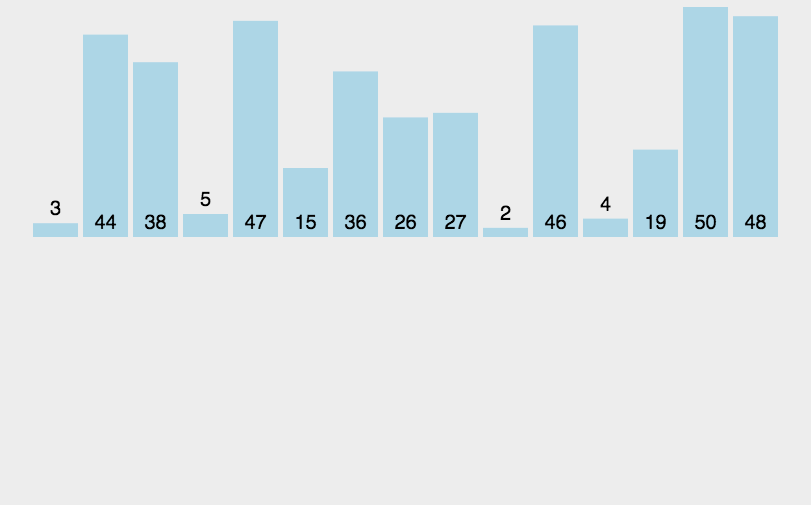思路:
- 从第一个元素开始,该元素可以认为已经被排序;
- 取出下一个元素,在前面已排序的元素序列中,从后向前扫描;
- 如果该元素(已排序)大于新元素,将该元素移到下一位置;
- 重复步骤3,直到找到已排序的元素小于或者等于新元素的位置;
- 将新元素插入到该位置后;
- 重复步骤2~5。
动画演示:

实现代码:
public class InsertSort extends BaseSort {
public static void main(String[] args) {
BaseSort sort = new InsertSort();
sort.printNums();
}
@Override
protected void sort(int[] nums) {
if (nums == null || nums.length < 2) {
return;
}
for (int i = 0; i < nums.length - 1; i++) {
//当前值
int curr = nums[i + 1];
//上一个数的指针
int preIndex = i;
//在数组中找到一个比当前遍历的数小的第一个数
while (preIndex >= 0 &amp;amp;&amp;amp; curr < nums[preIndex]) {
//把比当前遍历的数大的数字往后移动
nums[preIndex + 1] = nums[preIndex];
//需要插入的数的下标往前移动
preIndex--;
}
//插入到这个数的后面
nums[preIndex + 1] = curr;
}
}
}
//10万个数的数组,耗时:2051毫秒平均时间复杂度:O(n²)
空间复杂度:O(1)
算法稳定性:稳定


